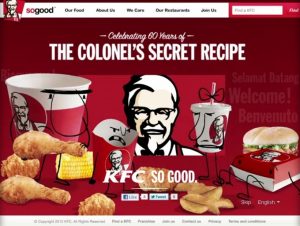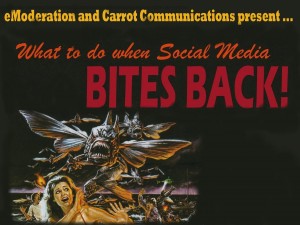 Earlier this month, the FT reported that social media has overtaken directory advertising for small businesses to market themselves. We’ve started working with a number of SMEs on creating ‘social content’ – content that can be shared across Facebook, LinkedIn, Twitter, blogs, and their own websites.
Earlier this month, the FT reported that social media has overtaken directory advertising for small businesses to market themselves. We’ve started working with a number of SMEs on creating ‘social content’ – content that can be shared across Facebook, LinkedIn, Twitter, blogs, and their own websites.
Small businesses have always been more able to adapt their culture to new technologies. Without huge marketing budgets and complicated processes in place, they are able to be more agile than big corporates in how they communicate, and less afraid of making a mistake.
A strong online presence helps small businesses build loyalty within their target audiences in the same way bigger brands are doing. But it’s important not to ‘do’ social just for the sake of it: be where your customer are. If you’re selling a complicated tech widget, Facebook may not be right for you; if you’re selling professional services, LinkedIn might be the most effective channel; and if you’re a social media tech start up Twitter might be a good bet.
This is my list of some of the top benefits of using social media for small businesses – have we missed any?
- Listening. Monitoring what people are saying on social media channels can be a great way to find out what they want from you, or even to test new products and services. You’ll soon get feedback on what’s working well and what isn’t, and – importantly – why.
- Building a reputation. When you start out, few journalists are interested in you, and you probably won’t have a huge advertising budget. Sharing information on social media channels – particularly Twitter and LinkedIn – can be a great way of building a profile among a very targeted audience.
- Getting to know your customers. Twitter, in particular, is a great channel for getting to know people, by talking to them (rather than at them). One-to-one conversations are important on all social channels, but nowhere more so than on Twitter.
- Customer service. Twitter and Facebook are becoming really useful for customer service. They do need you to respond quickly, though – there’s nothing worse than an unanswered tweet or Facebook post. It’s as bad as an unanswered phone call. Try to respond within a couple of hours, and if you can only monitor the channels during office hours, make that clear on your profile.
- Creating local awareness. Although Twitter is a global channel, using local hashtags (for example #Camberwell) can help you be seen by people who don’t follow you. (But make sure the hashtag is appropriate. Nothing is worse than a tweet that isn’t relevant to the hashtag you’re using.)
- Reviews and recommendations. Social media is about conversations, and also about sharing content and information. If people rate your services highly, they’ll respond, review and recommend you, whether it’s writing a review on TripAdvisor, recommending you on LinkedIn, sharing an experience on Twitter, or liking and sharing your Facebook posts. But remember – people will share both the good and the bad, so make sure their experience with you is a good one.
- Finally, and most importantly, using social media can help people find you in their online searches. Having a properly filled out LinkedIn profile will push you up the search results within LinkedIn as well as on Google, for example. Regular, relevant posts on Google+ will increase your Google search rankings. An in the future, how people share your content will improve your search rankings, so creating good, relevant content is incredibly important.






